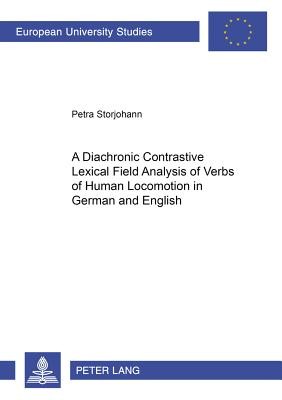
- We will send in 10–14 business days.
- Author: Petra Storjohann
- Publisher: Peter Lang D
- ISBN-10: 3631507712
- ISBN-13: 9783631507711
- Format: 14.8 x 21 x 1.5 cm, minkšti viršeliai
- Language: English
- SAVE -10% with code: EXTRA
A Diachronic Constrastive Lexical Field Analysis of Verbs of Human Locomotion in German and English (e-book) (used book) | bookbook.eu
Reviews
Description
This book explores the semantic properties of verbs expressing human locomotion and investigates their sense relations in German and English diachronically. For this purpose a model was developed which is related to revised versions of Lutzeier (1981) by linking it with a context-dependent analysis, hence combining a paradigmatic with a syntagmatic approach. Within this approach the influence of contexts on verbs is investigated, and it is illustrated to what extent syntagmatic constraints play a part in establishing features in verbs. Semantic changes holding between members of this lexical field are shown in tables and diagrams. A comparison of morphologically related verbs is conducted, and qualitative and quantitative differences in the lexical representation of meaning concepts are analysed. In addition, it is demonstrated what notions are lexicalised in each linguistic period.
EXTRA 10 % discount with code: EXTRA
The promotion ends in 22d.00:39:53
The discount code is valid when purchasing from 10 €. Discounts do not stack.
- Author: Petra Storjohann
- Publisher: Peter Lang D
- ISBN-10: 3631507712
- ISBN-13: 9783631507711
- Format: 14.8 x 21 x 1.5 cm, minkšti viršeliai
- Language: English English
This book explores the semantic properties of verbs expressing human locomotion and investigates their sense relations in German and English diachronically. For this purpose a model was developed which is related to revised versions of Lutzeier (1981) by linking it with a context-dependent analysis, hence combining a paradigmatic with a syntagmatic approach. Within this approach the influence of contexts on verbs is investigated, and it is illustrated to what extent syntagmatic constraints play a part in establishing features in verbs. Semantic changes holding between members of this lexical field are shown in tables and diagrams. A comparison of morphologically related verbs is conducted, and qualitative and quantitative differences in the lexical representation of meaning concepts are analysed. In addition, it is demonstrated what notions are lexicalised in each linguistic period.


Reviews